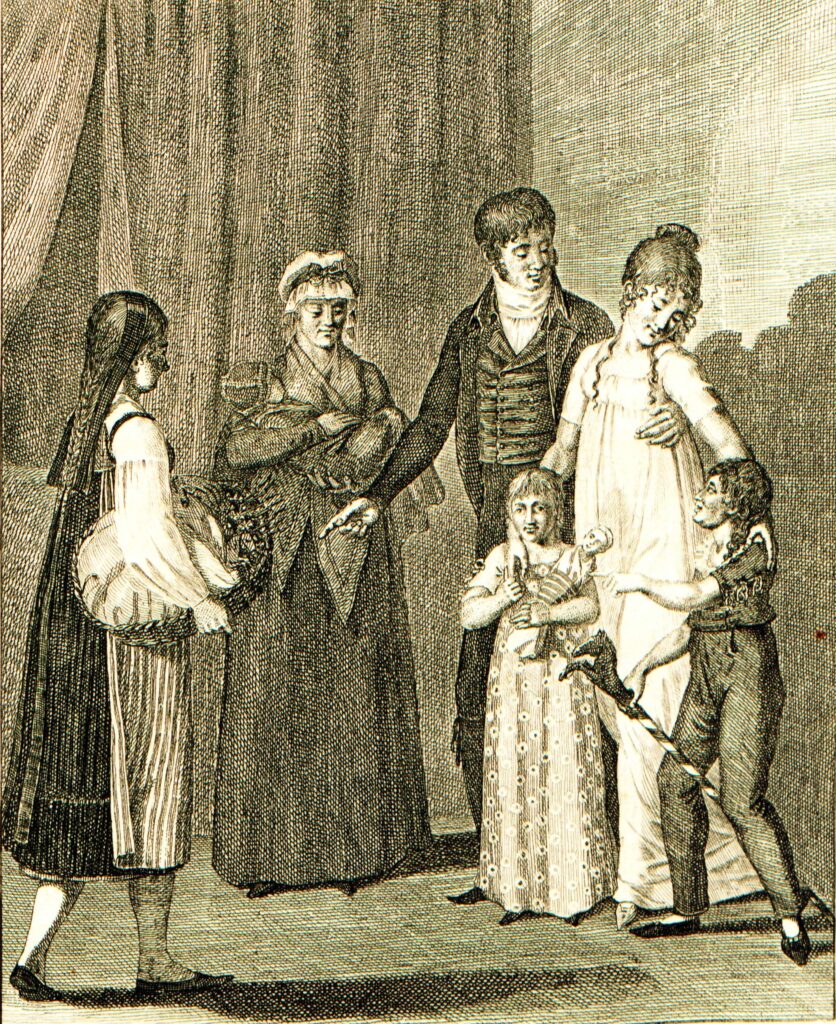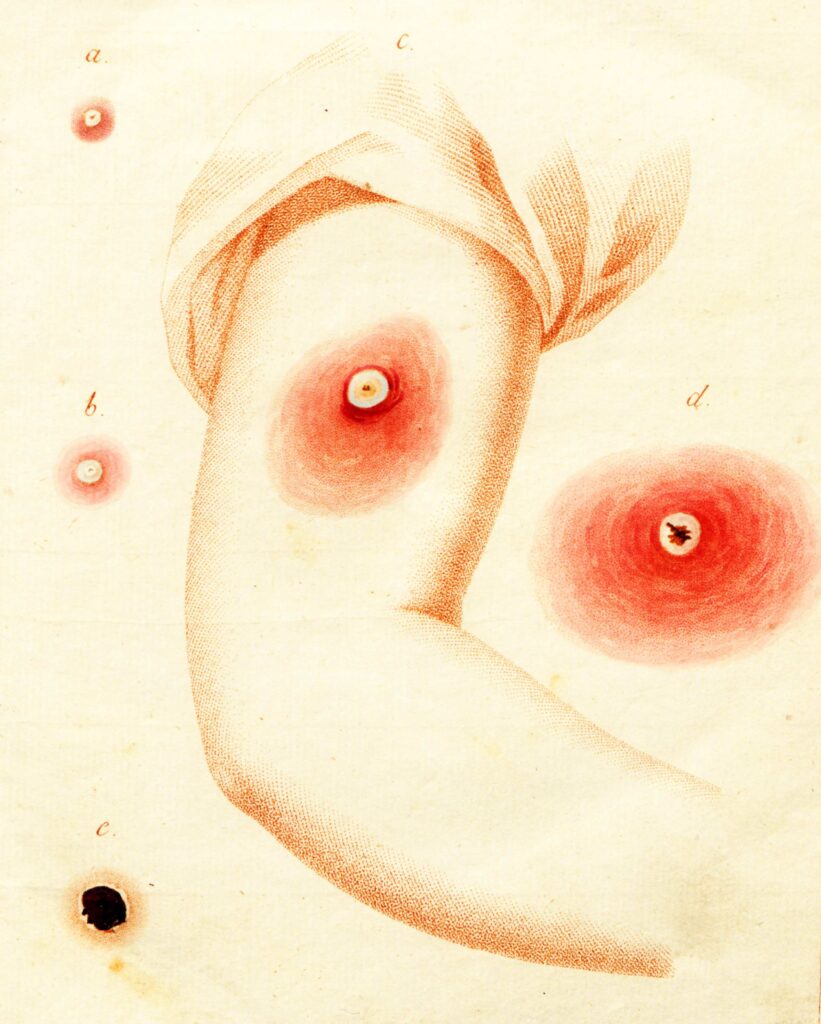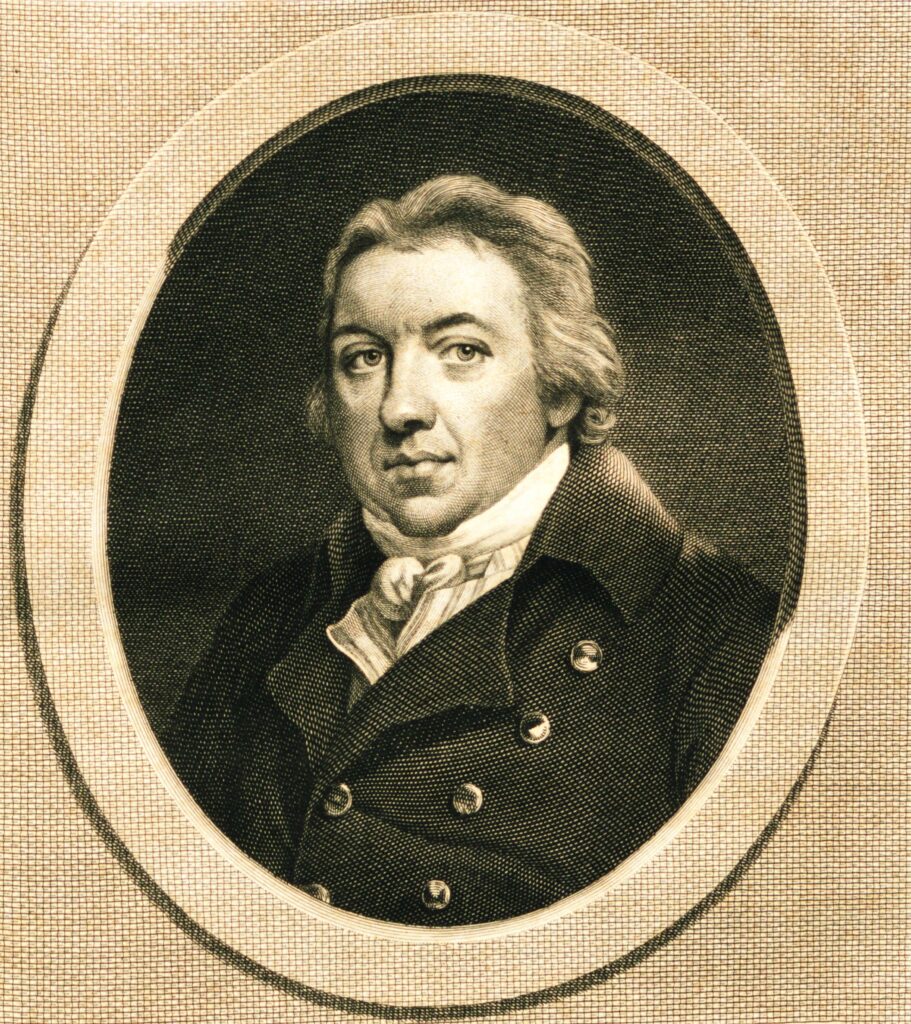This post is also available in:
 Deutsch
Deutsch
The English physician Edward Jenner is considered the inventor of smallpox vaccine. He first published his findings in 1798. Just two years later, in 1800, physician Johann Heinrich Lavater vaccinated the first child in Zurich.
A few years later, the Gesellschaft der Wundärzte auf dem Schwarzen Garten – The Zurich society of physicians’s at the time- conducted what was probabely Zurich’s first vaccination campaign. The medical doctors and surgeons of the society had founded the medizinisch-chirurgische Institut in 1782, a predecessor of the Zurich medical faculty found in 1833. Its members saw themselves as enlightened pioneers in the application of progressive scientific methods for the common good. Accordingly, they reacted enthusiastically to the new vaccine. At the beginning of the 19th century, smallpox was the most feared infectious disease. In regularly recurring epidemics, countless children fell victim to the disease. Even those who survived the disease often remained scarred or suffered other impairments.
From 1804 to 1806, the Gesellschaft der Wundärzte auf dem Schwarzen Garten promoted smallpox vaccination in three editions of its New Year’s bulletin dedicated to Zurich’s youth. Each bulletin contained a copperplate engraving and a few pages of explanations. At a time when pictures were still scarce, the illustrations were of particular interest.

A gift for vaccination
The first engraving in the bulletin of 1804 depicts of an elegantly dressed family from the urban bourgeoisie with their servants. The mother, in a fashionable Empire dress based on the French model, tenderly puts her arms around a boy and a girl who have just received a hobbyhorse and a doll as a gift for their vaccination. Another, smaller child is still in the arms of a nurse. The text explains that the family is following the custom of relatives sending a «gift of smallpox» to children who had survived the infection. The two children of this family instead receive «gifts of cowpox, or vaccination».
The text praises « the wise house-father and the unprejudiced house-mother» who «with the reassuring conviction of having chosen the best» decided on smallpox vaccination. «All three, the tender little one which the keeper carries, as well as the other two, have nearly survived this slight and harmless disease, and receive the ordinary present for smallpox. They are not weak and sickly, these little ones; they suffer from no ill effects of the disease; their faces are not disfigured; their eyes have suffered no damage; they can immediately take pleasure in their presents.»

A true vaccination pustule
The engraving of 1805 depicts the ideal-typical development of the vaccination pustules. This illustration was intended to familiarise Zurich doctors with the «true vaccination pustule”. The pictures and the description of the course of the disease were an important part of the instructions for the new method, because only by closely observing the development of the pustules could the doctors be sure that it was really cowpox.
Vaccination from arm to arm was recommended. For this purpose, a little fluid was taken from the fully formed pustule of a previously vaccinated child with a needle or lancet. A child placed on the opposite received some incisions with a lancet or needle in the upper arm, so that the skin could be opened like a flap. The fresh lymph of the first child was applied on these openings. If it was not possible to vaccinate from arm to arm, the lymph was dried on small glass plates that could be pressed onto the incisions of another child later. Other methods included soaking a cotton thread with lymph or using the dried scab of a vaccination pustule.
Characteristic appearance
After three days, a small, reddish, hard nodule developed on at least part of the vaccinated area, which gradually grew into a blister. The vaccination was considered successful if at least one pustule showed the characteristic appearance after eight days, as shown in the copperplate engraving in the middle of the picture. Now, if necessary, lymph could be taken for further vaccinations. The pustule then gradually receded until it was almost completely covered by scabs. The regular course of the vaccination process also included one or two days of fever and general malaise.
According to the bulletin, vaccination was already very popular in the city of Zurich in 1805, so that during an epidemic that year «only 6 non-vaccinated children got the human pox» in the city of Zurich. In the countryside, however, vaccination was still rather unknown. In the neighbouring village of Schwamendingen, many children died again, about seven for every ten who fell ill.

A medical hero
The last bulletin in the series was dedicated to Edward Jenner. Johann Heinrich Lavater had an engraving specially commissioned from England for the portrait. The Zurich artist and engraver Johann Heinrich Lips copied it and engraved it in copper. In the text, Jenner is recommended as a role model for young readers of all classes, because «his behaviour in discovering and publicising the cowpox vaccine is a model not only for doctors and natural scientists, but for everyone who has the opportunity to notice and assess natural occurrences and to derive interesting consequences from them: and such opportunities present themselves to every person, whatever his class and profession, more often in the course of his life. »
Indeed, Jenner made his discovery not as a medical authority but as a simple country doctor. His merit was that he followed indications that milkmaids who had contracted cowpox melking infected cows with open wounds on their hands had become immune to smallpox. His experiments with children – including his own son – showed that deliberate infection with cowpox reliably protected against smallpox and was associated with significantly fewer dangers than the already known method of inoculation, the deliberate transmission of real smallpox. With its publication by the Royal Society, vaccination (after Latin variolae vaccinae= cowpox) spread rapidly throughout Europe. Jenner as the «saviour of thousands of lives» became one of the first popular medical heroes. In the course of the 19th century, numerous children’s hospitals and other medical institutions for children were named after him.
